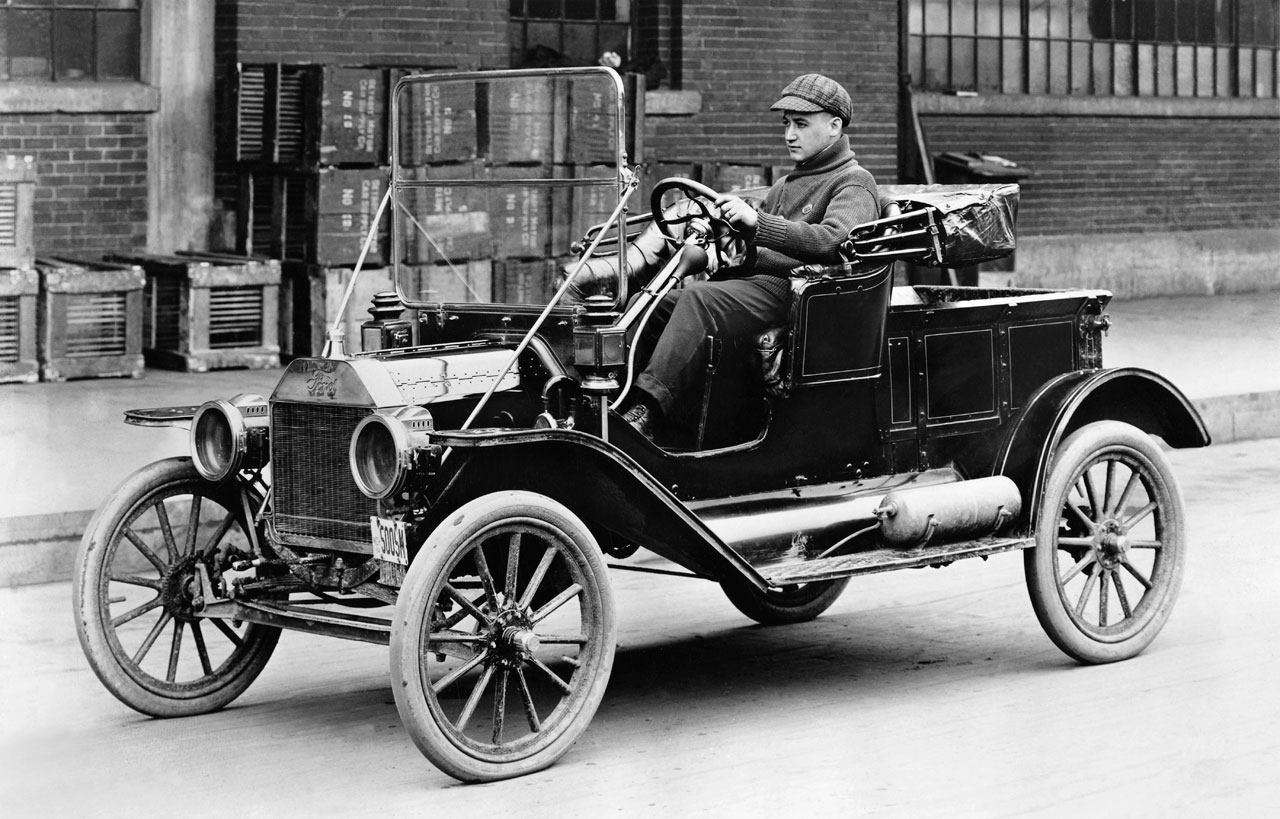
The Ford Model T was a car produced by Henry Ford's Motor Company from 1908 to 1927. The first Model T was manufactured on September 27, 1908 in Detroit. Its popularity was mainly thanks to its low price and robustness. Henry Ford was the first to introduce assembly line production for cars. This accounted for a reduced production time (about one tenth of the time it took to assemble any other car!) and, thus, a reduced price. A Model T indeed cost about $850 ($20,000 today) in 1908, but by the 1920s, the price had fallen to $290 (about $3,000 today).
Ford had an obsession with diminishing costs. That is why he introduced a series of measures: he reduced the working hours from 9 to 8 hours a day, so that there could be three shifts of 8 hours' work, covering the entire work day. From 1913 to 1926, Model T's were only painted in black, in order to reduce the costs. This accounts for this famous quote attributed to Henry Ford: “You can have any colour you want as long as it's black”.
Ford also made many efforts in order to shorten the time of assembly and, by 1913, it took only one hour and 33 minutes (instead of 12 hours and 8 minutes in 1908) to assemble a Model T! In the year 1927, the company was producing a car every 24 seconds! In the early 1920s, two thirds of American cars were Model T's.
Model T's were very robust cars. They could ride on nearly any road, and even through snow, with a top speed of 40-45 mph (64–72 km/h). Their parts were also replaceable, so that it was really simple to repair them. Model T is thus really the car that “put America on wheels”!
The 'Thin Lizzie' (or 'Flivver'), as many Americans called Model T, is now part of the American popular culture. There are a few songs about it, like 'The Little Ford Rambled Right Along' (in 1914) or even 'You Can't Afford to Marry If You Can't Afford a Ford' (sang by Jack Frost in 1915). There's also an Irish hard rock band called 'Thin Lizzy'. Model T has really become the symbol of industrialisation, in such a way that, in Aldous Huxley's 'Brave New World' (a book from 1932), Henry Ford is worshipped as a God, and the years are dated 'After Ford'. In this novel, people are created in assembly lines and make the 'sign of the T' instead of the sign of the Christian sign of the cross.

No comments:
Post a Comment